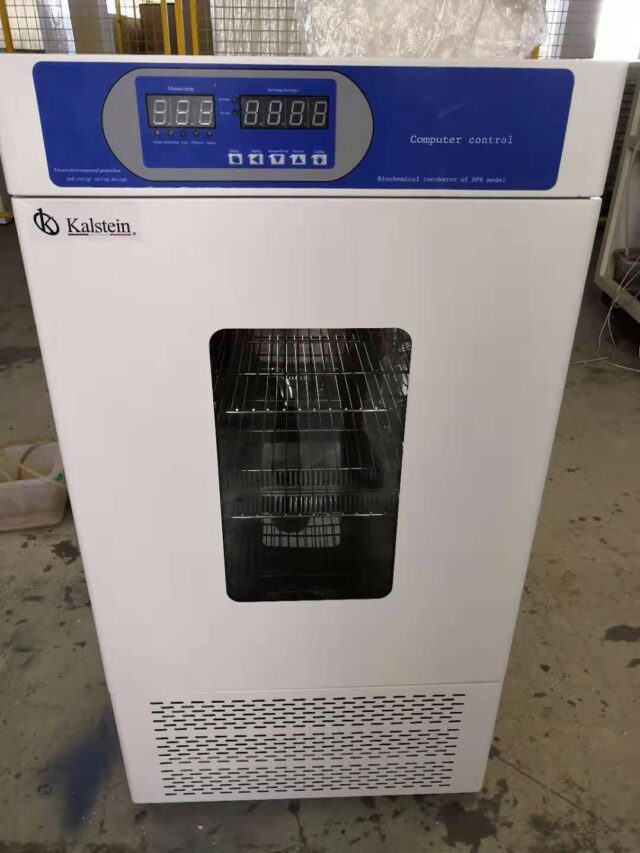Having a stable contaminant-free environment is a fundamental issue in any kind of laboratory, especially when it comes to the ones in the microbiology field. Laboratory incubators provide this important feature that gives the comfort of working with microbiological cultures, cell cultures and tissue cultures with special conditions regulating viable growth factors such as temperature, humidity, ventilation and CO2. This is the ultimate equipment for the growing and storing bacterial cultures. Incubators are necessary equipment for any laboratory conducting cell culture and tissue culture work. Incubators protect cells from changes in temperature, humidity, CO2 and O2. The range of temperature may vary (according to the model) 0°C to 80°C, though is normally used from 5ºC y 37ºC.
General types of incubators
There are many different types of incubators, and the most commonly used are the following:
Standard incubators: These incubators can be gravity or fan assisted convection and their range of temperature is from ambient to a maximum of 80°C or 100°C.
Cooled incubators: These incubators work at temperatures close to or below ambient temperature.
Humidity incubators: These incubators control both, temperature and humidity, thanks to a refrigeration system rather than by direct heating.
CO2 (carbon dioxide) incubators: These incubators are widely used in Biological and it is used when it is necessary to maintain a determined percentage of carbon dioxide in the incubator. The level of CO2 is controlled by a thermal conductivity sensor or infra-red sensor. The humidity is usually obtained from a tray of water which is constantly evaporating.
Shaking incubators: These incubators shakes in a temperature controlled atmosphere. There are different size of this type of incubators, with a range of temperature from ambient or refrigerated.
Hybridisation incubators or hybridisation ovens: These incubators hold different sizes of hybridization bottles and rotate them at a set speed to enable hybridization in molecular biology.
Choosing the appropriate incubator
There are certain general features to bear in mind when choosing the appropriate incubator for a laboratory:
Internal volume: Compare always the internal dimensions to determine according to the lab requirement, and the external dimensions when thinking about lab space available, the bench or floor standing.
Aluminium clad or stainless steel interior: Bear in mind that stainless steel is easier to clean and resistant to corrosion, in contrast to aluminium.
Gravity or fan forced convection: Depending on the importance of temperature uniformity. Fan-forced is appropriate to keep uniformity, but if drying out is not a priority then gravity convection is a better option.
Digital or analogue control/display: Analogue control is based on a numbered dial and needs a thermometer or dial thermometer to display the actual temperature. In contrast, the digital control models set and display temperature through an LCD controller, in the form of a microprocessor or digital PID controller.
Shelves: Depending on the type of space required, the number of shelves can be relevant for the researcher.
Inner glass door: When the incubator has a glass door, the researcher is enabled to see the sample without open the door, so this guarantees the temperature stability.
Safety features: Some models have an alarm system in case of variations of temperature, whether it is too high or too low.
General use of the incubators
Laboratory incubators are widely used for biology applications, such as for cell and tissue cultures, for pharmaceutical and haematological studies, for biochemical studies, food processing and cell aeration, also used for animal studies, solubility studies and fermentation as well as for bacterial cultures.
They are widely used for the study of tissue cultures that involves the extraction of fragments of animal or vegetable tissue and to store them in controlled environments to analyze its growth.
For further information, please follow this link HERE

